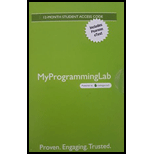
(Account Inheritance Hierarchy) Create an inheritance hierarchy that a bank might use to represent customers’ bank accounts. All customers at this bank can deposit (i.e., credit) money into their accounts and withdraw (i.e., debit) money from their accounts. More specific types of accounts also exist. Savings accounts, for instance, earn interest on the money they hold. Checking accounts, on the other hand, charge a fee per transaction (i.e., credit or debit). Create an inheritance hierarchy containing base class Account and derived classes SavingsAccount and CheckingAccount that inherit from class Account. Base class Account should include one data member of type double to represent the account balance. The class should provide a constructor that receives an initial balance and uses it to initialize the data member. The constructor should validate the initial balance to ensure that it’s greater than or equal to 0.0. If not, the balance should be set to 0.0 and the constructor should display an error message, indicating that the initial balance was invalid. The class should provide three member functions. Member function credit should add an amount to the current balance. Member function debit should withdraw money from the Account and ensure that the debit amount does not exceed the Account’s balance. If it does, the balance should be left unchanged and the function should print the message “Debit amount exceeded account balance.” Member function getBalance should return the current balance. Derived class savingsAccount should inherit the functionality of an Account, but also include a data member of type double indicating the interest rate (percentage) assigned to the Account. SavingsAccount’s constructor should receive the initial balance, as well as an initial value for the SavingsAccount’s interest rate. SavingsAccount should provide a public member function calculateInterest that returns a double indicating the amount of interest earned by an account. Member function calculateInterest should determine this amount by multiplying the interest rate by the account balance. [Note: SavingsAccount should inherit member functions credit and debit as is without redefining them.]
Derived class checkingAccount should inherit from base class Account and include an additional data member of type double that represents the fee charged per transaction. CheckingAccount’s constructor should receive the initial balance, as well as a parameter indicating a fee amount. Class checkingAccount should redefine member functions credit and debit so that they subtract the fee from the account balance whenever either transaction is performed successfully. checkingAccount’s versions of these functions should invoke the base-class Account version to perform the updates to an account balance. CheckingAccount’s debit function should charge a fee only if money is actually withdrawn (i.e., the debit amount does not exceed the account balance). [Hint: Define Account ‘S debit. function so that it returns a bool indicating whether money was withdrawn. Then use the return value to determine whether a fee should be charged.]
After defining the classes in this hierarchy, write a program that creates objects of each class and tests their member functions. Add interest to the savingsAccount object by first invoking its calculateInterest function, then passing the returned interest amount to the object’s credit function.
Want to see the full answer?
Check out a sample textbook solution
Chapter 19 Solutions
MYPROGRAMMINGLAB WITH PEARSON ETEXT
 C++ Programming: From Problem Analysis to Program...Computer ScienceISBN:9781337102087Author:D. S. MalikPublisher:Cengage Learning
C++ Programming: From Problem Analysis to Program...Computer ScienceISBN:9781337102087Author:D. S. MalikPublisher:Cengage Learning Microsoft Visual C#Computer ScienceISBN:9781337102100Author:Joyce, Farrell.Publisher:Cengage Learning,Programming Logic & Design ComprehensiveComputer ScienceISBN:9781337669405Author:FARRELLPublisher:Cengage
Microsoft Visual C#Computer ScienceISBN:9781337102100Author:Joyce, Farrell.Publisher:Cengage Learning,Programming Logic & Design ComprehensiveComputer ScienceISBN:9781337669405Author:FARRELLPublisher:Cengage Systems ArchitectureComputer ScienceISBN:9781305080195Author:Stephen D. BurdPublisher:Cengage Learning
Systems ArchitectureComputer ScienceISBN:9781305080195Author:Stephen D. BurdPublisher:Cengage Learning C++ for Engineers and ScientistsComputer ScienceISBN:9781133187844Author:Bronson, Gary J.Publisher:Course Technology Ptr
C++ for Engineers and ScientistsComputer ScienceISBN:9781133187844Author:Bronson, Gary J.Publisher:Course Technology Ptr EBK JAVA PROGRAMMINGComputer ScienceISBN:9781337671385Author:FARRELLPublisher:CENGAGE LEARNING - CONSIGNMENT
EBK JAVA PROGRAMMINGComputer ScienceISBN:9781337671385Author:FARRELLPublisher:CENGAGE LEARNING - CONSIGNMENT





